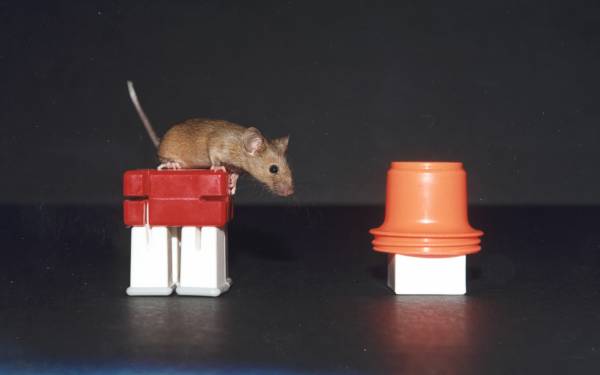
Despite all the development of science and technology, people have not understood one of the most important questions: how did works grey thing in our head that forces us to develop science and technology and to ask all these questions. Obtained a curious recursion: something inside us wants to know about what he wants to know how it works. It spent enormous resources, conducted a lot of research, we more or less understand the General principles, but to put it all into a single coherent picture is difficult.
But it’s so interesting that “Today” has gathered all the latest research on the brain and figured out how intelligence works, why we dream and how many dimensions are used by the neurons of the brain to process incoming signals. Welcome to your head — and don’t be afraid that you will see there.
11 MEASUREMENTS: HOW NEURONS COMMUNICATE
The Blue Brain project based in Switzerland, has for years been a thankless job: the neuroscientists are trying to figure out everything about the brain of humans (and other beings with this body). In the latest study, they apply the math (or more precisely algebraic topology, which describes properties of objects regardless of changes in their form) and gasped in surprise. Don’t expect any conclusions, the scientists themselves don’t know what you’re facing, however, the beginning of quite intriguing: inside our heads is, mathematically speaking, a multi-dimensional space.
Our brain is approximately 86 billion neurons, connections between them are in all directions, forming a complicated network, which forms the consciousness.
In their experiment, neuroscientists used a detailed computer model of the neocortex means “new bark”, the most modern part of the brain that has formed most recently and is responsible for consciousness and perception. In the simulation of the passage of the signals, the scientists noticed that the neurons are grouped, and the number of neurons in these groups shows the size of a multidimensional geometrical object.
“We found a world, which even did not suspect, — says the project leader Henry Markram. Even in a small fraction of the brain such objects are tens of millions who have up to seven dimensions. And in some networks, the number reached 11”.
Developing a model, scientists have tested it on virtual stimuli, and then reached for rats. The signal creates a “multidimensional home” from neurons and empty spaces between them. First link looks like a stick, then two-dimensional plane Board, then the cube, and then more complex shapes with four, five, six dimensions. And so on until 11. It is, however, to note that we are not talking about physical dimensions — inside our brain there are no other brains, tucked away in the hidden folds of reality. Multidimensionality here is the number of bonds that form neurons. We also multidimensional: how many people with whom I communicate at the moment, so many dimensions. The only problem is scientists have yet to understand why groups of neurons are collected in such designs.
MATH: THE FORMULA FOR INTELLIGENCE
A leading neuroscientist University Augusta, Georgia Dr. Joe Tsin believes that the formula of intelligence: N = 2i – 1. And yet, as doctor, intelligence is equal
“uncertainty and infinite possibilities”. But it’s the lyrics, and we should refer to a paper published in Frontiers in Systems Neuroscience, in which Tin associates tested the theory and found that it runs for seven different areas of the brain, defining the bases like feeding, memory, and fear.
17 years ago Tsin through genetic engineering has created a “smart mouse” that was studied and solved complex mazes faster than normal counterparts. A few years later he found that the hippocampal cells of mice — the memory center of the brain vary depending on what is happening. Some were involved in the event as a whole, others were more picky and “dismantled” the events on the elements. The map of Tsin noticed that neurons form clusters from the specific to the General. This was the main theory connectedness: a scientist demonstrates how neural networks make the transition.
The main idea Tina that a single neuron can not become the main computational unit of the brain, this role you take over the neural network called “clicks” that allows the brain to survive every time the neuron fails, because you poisoned him with alcohol. Simple clicks are intertwined in a large network, called a FCM (functional connectivity motifs functional motifs relations) according to N = 2i – 1, where N is the number of neural cliques that are connected in different ways, and the i — types of information received.
If the animal wants food, and females need three neuronlike to meet these needs
For example, you have an animal that wants food and females. That is, i = 2. Accordingly, in order to meet these needs, you need three clicks (2 x 2 – 1 = 3). This is reminiscent of the cubes of the designer, from which you can build different structures depending on the incoming information. More complex tasks require more complex constructions, but the basic principle remains the same. Moreover, according to Tina, these units are programmed in advance. I mean in our mind already has the answers to almost all questions (or algorithms for their solution). So the brain mixes “work” and “money”, turning them into “economy”.
To confirm the value of the formula itself, the scientists put the mice brain up to electrodes and gave them a feed of sugar, rice and skim milk. The theory is that mice have 15 neural cliques, in order to fully represent each type of food and combinations thereof. Needless to say that 15 click and it was discovered? Repeating the experiment with fears (explosion, earthquake, falling, electric shock), the researchers again received 15 click.
To verify that this algorithm already exists in the brain, not learns, the experiment was repeated, but with genetically modified mice, which lacked the receptors needed to change the neural networks for training. The result was repeated.
What to do with it, is unclear. Tzin himself believes that his theory allows us to reconsider storing memories in the brain and will shed light on how disease and old age affect the brain at the cellular level. And this will allow you to teach artificial intelligence to the flexibility and curiosity, but that’s another story.

Improved Arc mouse. Her doctor Tzin created 17 years ago. Photo: www.princeton.edu
TO REMEMBER, TO HEAL, TO SURVIVE: WHY DO WE DREAM
Somehow it so happened that just on this planet for a reason. Including such stupid things, like dreams. We counted as many as ten. Sleep with this thought and decide for yourself which you like best.
- So the hat remains a hat
The consciousness of each of us is a cruel and terrible censor, suppressing aggressive and sexual instincts, and only in the dream, the unconscious reveals the background and tear the veils of morality! So said Freud, he created psychoanalysis and generally wore a beautiful beard like the… um, good night!
- To improve health
Other, no less vicious, the researchers went a step further and not let people see dreams as soon as the REM phase, patients were woken. It turned out that dreamless sleep — so-so idea: the participants of the experiment were tense, they had difficulties with concentration, coordination was disrupted, increasing the weight and in addition have hallucinations.
- To be treated
Many psychologists believe that the human being is often difficult to separate the event from its accompanying emotions. I mean you, of course, knowingly fled from strashnyuchy rabbit and half yelled in horror, imagining his creepy ears and a dark look.
SEE ALSO
- How quickly to fall asleep: useful tips
But to understand how much he threatened your life, will help sleep, which will separate strong emotion like fear, love or sadness and will help the brain to process the event separately, separately feeling and in General to look at the situation from a different angle, get to the point of anger or happiness, so suddenly fallen on your head. So in every odd situation and really need to sleep.
- To remember
All day long the part of the brain called the hippocampus works hard for the neurons to accumulate all-all the important memories (to buy milk, the face of the girl is called and napivaetsya new song). But in sleep, studies show that the hippocampus is to pump the whole flow in the cerebral cortex. And sometimes plays all day in reverse order. So try to sleep well after a day full of bright impressions.
- To avoid disorders
In 2009, scientists from Harvard conducted a study that found a strange relationship between dreams and bipolar disorder. Moreover, sleep problems in children and adults increase the risk of developing this disorder. This is all due to the fact that the interruption of the REM sleep affects the levels of neurotransmitters and stress hormones, and hormonal imbalances lead to mental disorders. So watch your dreams and not go crazy.
- To calm down
In 2009, five researchers found 35 healthy students and 20 depressed-anxious and forced them to sleep. And then woke after 10 minutes in the phase of rapid eye movement (REM), when the brain is active and we have dreams, and after 10 minutes in the phase of non-REM (when the brain calms down). Then the unfortunates were forced to take tests on memory, mood and self-esteem. What was required to prove: depressive-anxious students dreamt aggression and self-torture, but REM sleep is a strange way helped them cope with these emotions.
- To process the information
It turns out that during REM sleep we create abstractions. I mean take some new concepts and relate them to what you already know or even remotely understand. Research has shown that dreams occur when we become aware of these relations (fragments of sounds, images and movements). The brain is like trying to understand what is happening and draws phantasmagorical, but very logical at the time, a picture from different fragments in parallel and really putting information brick by brick while we watch cartoons.
- To be background
Since 1977, some boring scientists who created the model of activation-synthesis, I think that the limbic system of our brain from time to time is activated, “illuminating”, and includes some out there random pictures. Just because he can. So dreams is the interpretation of biological signals, and all the downers invented idiots. However, immediately apologize to the authors of the theory, these sets of images still carry a positive function and help us to create new ideas.
- To adjust
Be sober, and we (and all the other dreamers of the world) make mistakes that can lead to undesirable consequences like death. But during sleep turn into security experts, hide in the very secure location and maintain life. This behavioral strategy, in General, helped to survive many living entities, who finished in natural selection. But here’s the funny part: worth one night to spend in the REM phase of sleep less time, the body tends to catch up and shows dreams longer! So quietly chase pink sofas on ulfkotte with bat wings is evolutionary.
- To repel the attack
Finnish researchers from the University of Turku invented such a thing as “the theory of the stimulation of the threat.” They found that children who live in dangerous conditions (dysfunctional families, troubled country) or were somehow injured, you see more vivid dreams than those that live in the calm conditions. And stimulation system threats work better: during sleep, they seem to rehearse the mechanisms of perception, allowing to perceive and avoid danger! So don’t be afraid to be afraid in the dream, it will help when you really chase a giant bumblebee with a chainsaw.







